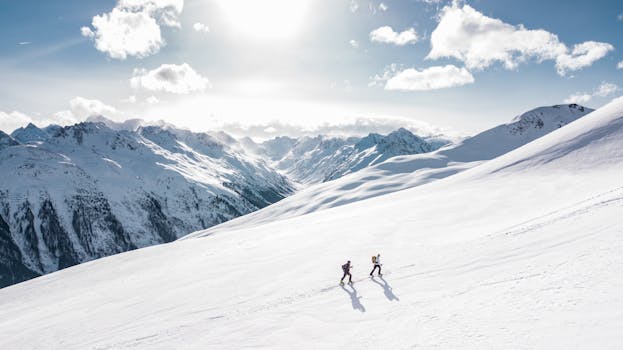How to Prepare for a Ski Holiday: Training, Equipment, Safety, and Practical Advice
Planning a ski holiday can be an exhilarating experience, but it requires careful preparation to ensure a safe and enjoyable trip. From physical training to selecting the right equipment, understanding safety protocols, and practical tips for your journey, this guide will help you get ready for the slopes.
Physical Training: Get Fit for the Slopes
Before hitting the slopes, it’s essential to prepare your body for the physical demands of skiing. Skiing is a full-body workout that requires strength, endurance, and flexibility. Here are some effective training strategies:
- Cardiovascular Fitness: Engage in aerobic exercises such as running, cycling, or swimming to build stamina. Aim for at least 30 minutes of cardio, three to five times a week.
- Strength Training: Focus on your legs, core, and upper body. Exercises like squats, lunges, and planks can enhance your strength. Incorporate resistance training two to three times a week.
- Flexibility and Balance: Incorporate yoga or Pilates into your routine to improve flexibility and balance, which are crucial for skiing. Stretching before and after workouts can also prevent injuries.
According to a study published in the Journal of Sports Sciences, skiers who engaged in a structured training program reported fewer injuries and improved performance on the slopes.
Choosing the Right Equipment
Having the right gear is vital for a successful ski holiday. Here’s a breakdown of essential equipment:
- Ski Gear: Invest in quality skis, boots, and poles. Consider renting equipment if you’re a beginner or only ski occasionally. Popular rental shops often offer the latest models.
- Clothing: Layering is key. Wear moisture-wicking base layers, insulating mid-layers, and waterproof outer layers. Don’t forget ski socks, gloves, and a helmet.
- Safety Gear: A helmet is non-negotiable. Consider additional protection like wrist guards or padded shorts, especially for beginners.
For example, a study by the National Ski Areas Association found that wearing a helmet reduces the risk of head injuries by 60%. Investing in proper gear not only enhances your performance but also ensures your safety.
Safety First: Understanding Skiing Risks
Skiing can be risky, but understanding safety protocols can significantly reduce the chances of accidents. Here are some essential safety tips:
- Know Your Limits: Ski within your ability level. If you’re a beginner, stick to green (easy) runs until you gain confidence.
- Follow the Rules: Adhere to the skier’s responsibility code, which includes yielding to others, staying in control, and being aware of your surroundings.
- Stay Hydrated: Altitude can lead to dehydration. Drink plenty of water before and during your skiing day.
According to the American Association of Orthopaedic Surgeons, the most common skiing injuries are knee injuries, accounting for 30% of all ski-related injuries. Proper training and awareness can help mitigate these risks.
Practical Advice for Your Ski Trip
In addition to training and safety, practical considerations can enhance your ski holiday experience:
- Plan Your Itinerary: Research ski resorts and their amenities. Consider factors like terrain, lift accessibility, and accommodation options.
- Book in Advance: Secure your lodging and lift tickets early to avoid last-minute hassles and potentially higher prices.
- Check Weather Conditions: Monitor the weather forecast leading up to your trip. Dress appropriately for the conditions and be prepared for changes.
For instance, a survey by Ski Magazine revealed that 70% of skiers prefer to book their trips at least three months in advance to ensure availability and better rates.
Conclusion: Ready for the Slopes
Preparing for a ski holiday involves more than just packing your bags. By focusing on physical training, selecting the right equipment, prioritizing safety, and considering practical advice, you can ensure a memorable and enjoyable experience on the slopes. Remember, skiing is not just about the thrill; it’s about enjoying the beautiful winter landscapes and creating lasting memories with friends and family. So gear up, stay safe, and have fun!
